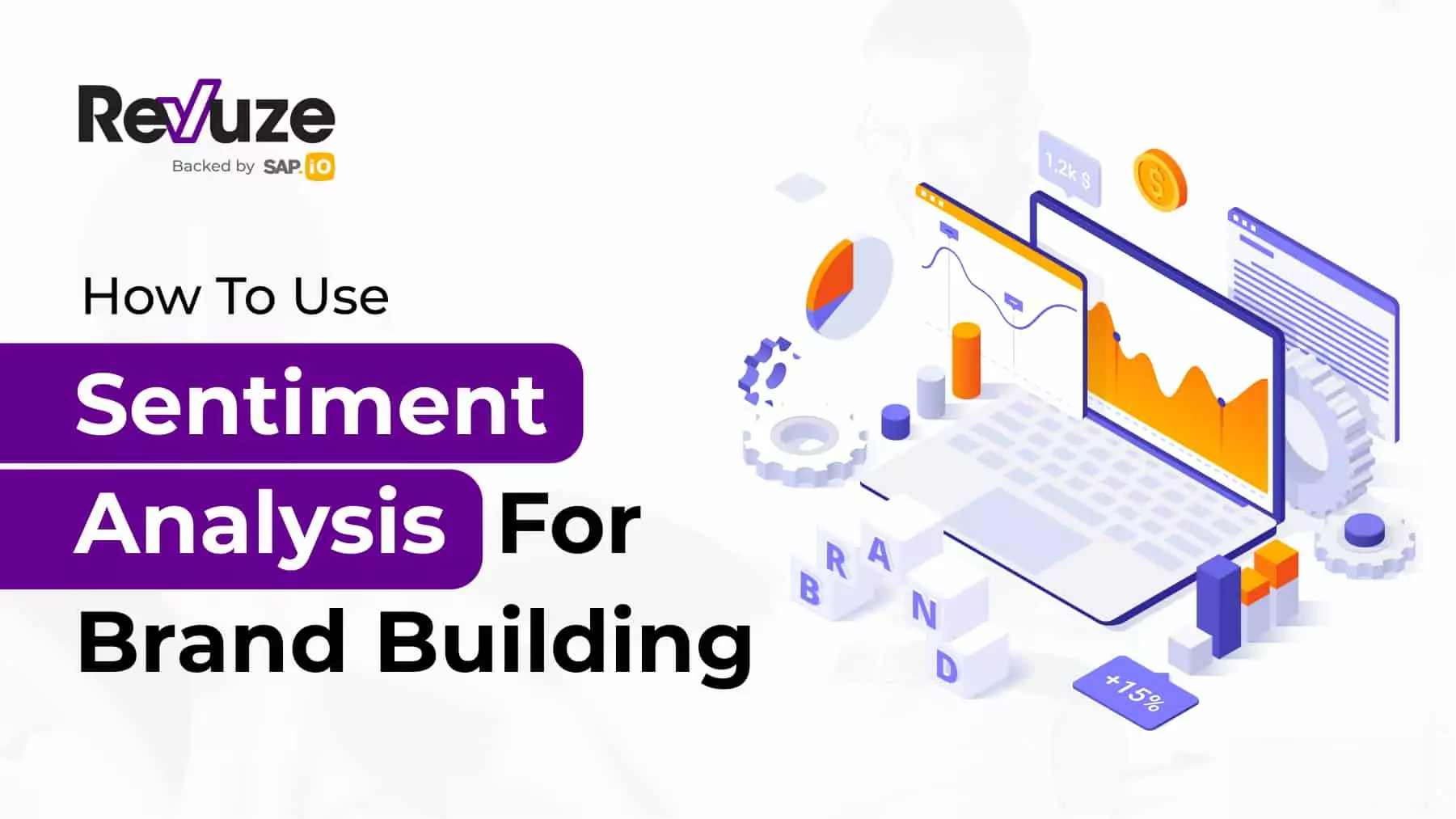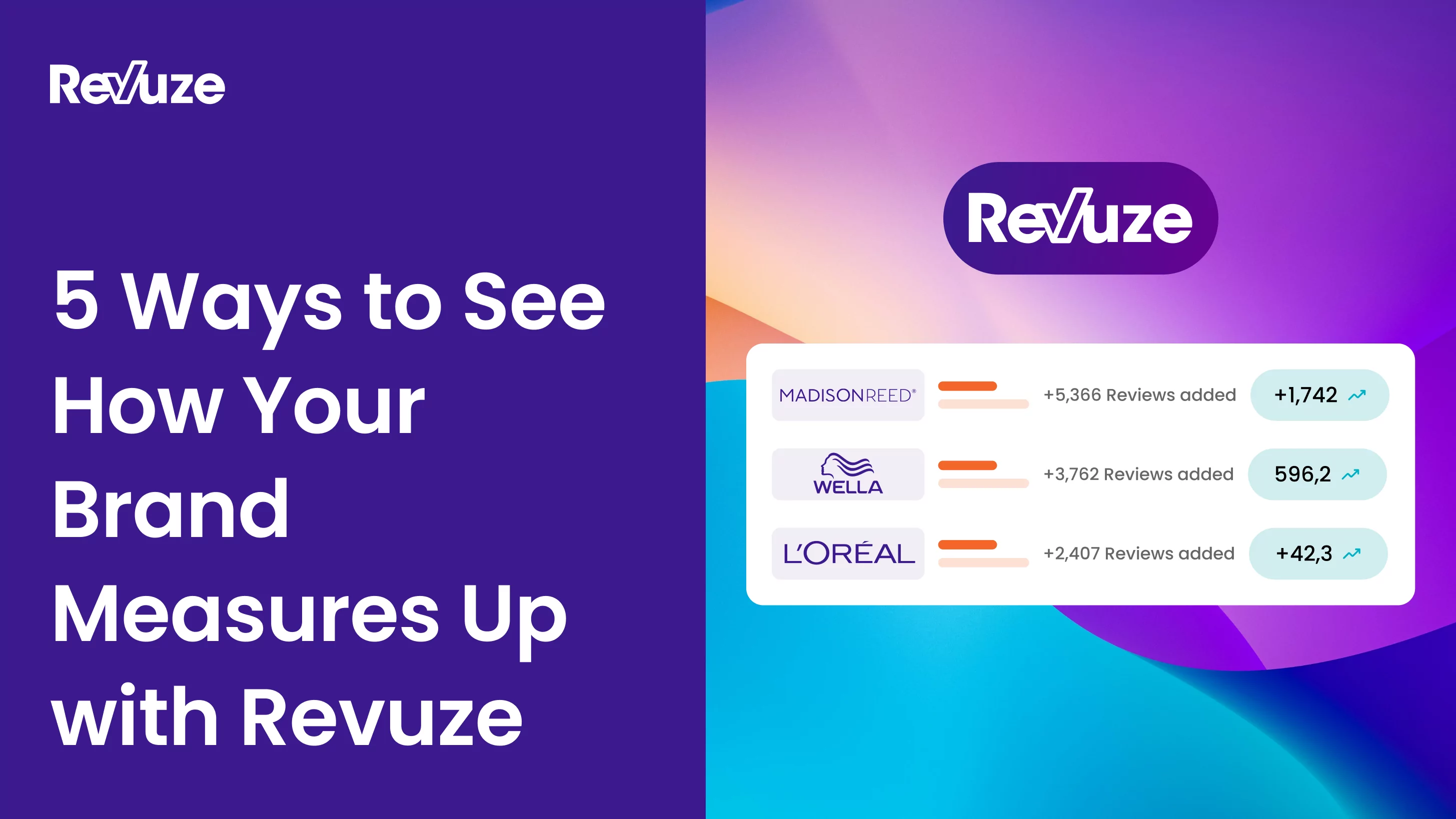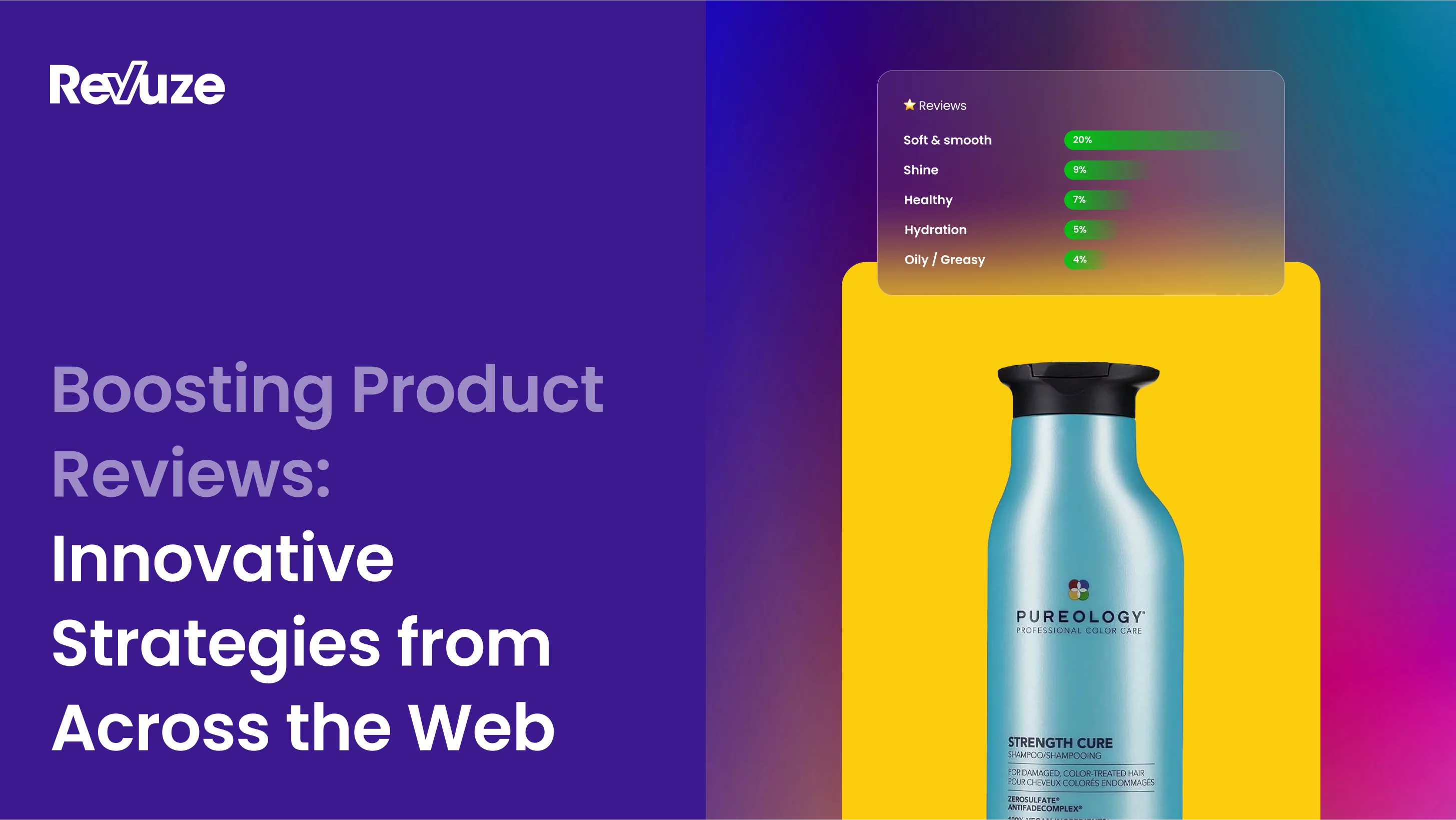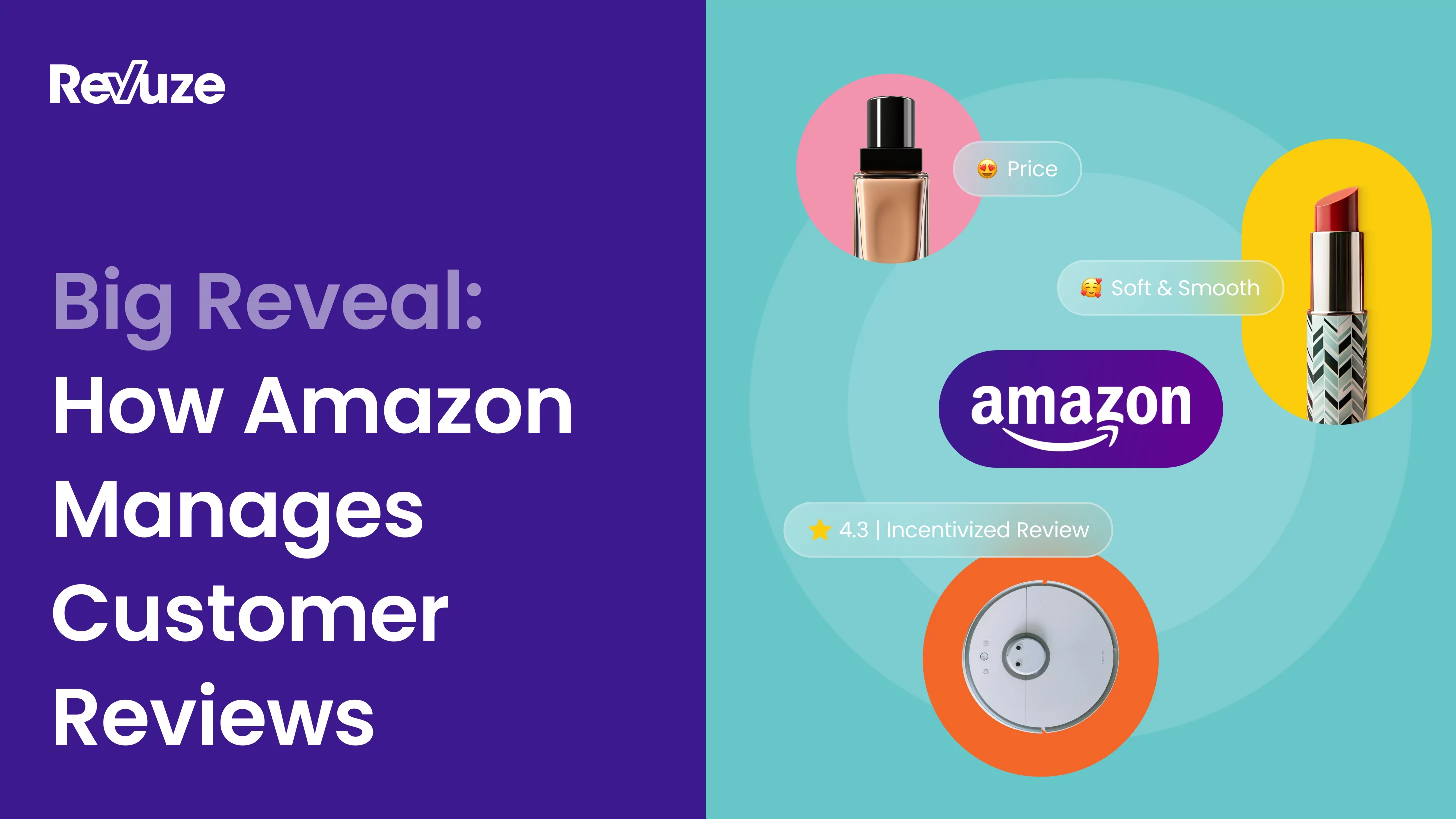
They love me… they love me not.
It’s a question most people ask themselves about loved ones. But what about asking this question from the position of a CEO or a data analyst?
When you do that, you’re conducting sentiment analysis, albeit without stripping a flower of its petals.
When building your brand, one of the most important things you can do is read your audience.
How people feel about your product is imperative to its success. And understanding the nuances of these feelings will help you get a leg up over your competitors.
It’s not just about a general “they love my product; they love it don’t.” It extends to minor details that make up your products or services and how you present them.
If there are things that rub customers the wrong way, keeping on top of them is key to success.
What customers want isn’t always obvious and consistent. If something works in one place and time, there’s no guarantee it’ll work in another. This is certainly true in trendy industries like fashion, where there’s an emphasis on culture and everything changes quickly.
So how do you keep on top of consumer perception and your response to it? Especially in the internet age, where social media posts and website reviews are published every few minutes. There’s simply too much data to analyze manually.
That’s where sentiment analysis comes in.
What is sentiment analysis?
Sentiment analysis, also known as “opinion mining,” is the automated process of analyzing a text and interpreting the sentiments behind it.
Through machine learning and text analytics, algorithms can classify statements as positive, negative, and neutral.
Companies and brands often use this process as a strategy to manage large amounts of data coming from Yelp, Twitter, Amazon, you name it.
This data allows businesses to learn more about customers’ feelings for their products and competitors’ offerings.
How sentiment analysis works
Sentiment analysis relies on an AI engine powered by machine learning (ML) and natural language processing (NLP) to extract information.
Machine learning allows the software to learn independently and become more accurate at predicting the outcome of analysis without being programmed for that explicit scenario. Essentially, it allows the software to “learn” from past examples to improve itself over time.
NLP analyzes human language and the meaning behind it. This covers text segmentation, grammatical analysis, and terminology extraction.
Which algorithms are used for sentiment analysis?
ML and NLP are tools to help the sentiment analysis algorithm produce the final results. There are three types of algorithms that are usually deployed:
- Rule-based – This is the basic and easy approach to implement. It’s based on manually pre-defined rules, helping the system analyze the text it reads. The drawbacks are clear, with having to rely on manual inputs that take plenty of resources and aren’t able to evolve automatically.
- Automatic – This is the advanced approach, using both NPL and ML. The system is first fed with thousands of expressions that are pre-defined as either negative, neutral, or positive. This is the “training” stage. Then, with its newfound knowledge, it can venture into its “prediction” stage, understand new terms and classify them appropriately.
There is a downside here, though. The algorithm is bound to make some mistakes, and it’s often hard to pinpoint exactly why this happened. - Hybrid – It’s the best of both worlds and the most effective algorithm. This approach Enjoys the high accuracy of the rule-based algorithm while running through new terms and expressions in the blink of an eye.
With these sophisticated algorithms in place, the sentiment analysis tool can go over the endless text and score it based on negative, neutral, or positive sentiment.

Further, when dealing with customer experience, it can also break down the text to topics such as:
- Product quality.
- Speed of service.
- Ease of communication.
- And more.
Let’s look at a couple of examples to understand it better.
Due to the large variety of cordless vacuum cleaners and the breadth of functions, people will often turn to customer reviews and see something like this.

How does the sentiment analysis AI understand it? It breaks down this piece of text into smaller ones, such as:
- “It’s lightweight, compact, and a brilliant all-round hoover.”
- “I’d buy another in a heartbeat.”
- “The tank is small.”
The AI then assigns a sentiment for each block of text. The first is very positive, and so is the second. The third is somewhat negative, though it can be considered neutral when taken into the larger context.
Decision makers can then understand what customers think about specific parts of the product or look at the overall – in this case, positive – picture.
Another industry where understanding customer sentiment is vital is the beauty industry.
This eyeliner review paints (no pun intended) a somewhat negative picture.

The review starts with “The pencil itself is great,” which the AI can mark as a positive sentiment. But then come blocks of text saying how it “breaks and is impossible to sharpen,” which are very negative. The review ends with a scathing “will not be buying another.”
Sentiment analysis will help the brand understand that the customers are disappointed with their product and why. In this case, they’ll know work is needed on the durability of the pencil rather than its quality.
As you can see, it’s something a human can do. But the key differentiator for sentiment analysis is the speed and accuracy it can analyze these reviews, something even a team of experienced analysts can’t achieve.
How Revuze performs sentiment analysis
The general themes of NPL, ML, and the various algorithms play a crucial part at Revuze. But to give our customers a competitive edge, we take a step further, using a personalized model for our automated sentiment analysis, helping to maximize accuracy and success rate.
We do it through “local models,” which allow us to adapt our technology to the specifics of each case study or client. We can generate local dictionaries and models within just a few days with 90% accuracy.
Here’s how it works: Revuze’s AI algorithms extract many unique topics, ranging from high-level ones (like user satisfaction and price) to granular topics (such as “softness” for toilet paper or “moisturizing strip” for disposable razors).
Instead of limiting ourselves to only 8-15 generic topics, we analyze 40-80 topics that are highly specific to each business or product we work with.
When you want to understand consumer sentiment around a certain product’s features, you cannot afford to use a sentiment analysis tool limited to generic topics. Personalization is key, and more on that later.

What are the challenges in sentiment analysis?
While algorithms can be very advanced, some text can be difficult for a machine to dissect and interpret.
Sarcasm
Users may write: “We had to wait 45 minutes to get a table. Great!” To a human being, it’s clear that the adjective “Great!” is used sarcastically.
How do we know it? Because of context.
We read the previous sentence, which talks about a long wait time, and we understand that the comment is not positive.
A good sentiment analysis tool has to be able to detect sarcasm from the broader context. Otherwise, you’ll get inaccurate data about your brand at the end of the analysis.
Nuance
Another issue has to do with nuance.
The comment “The movie was not bad” is saying that the movie was not bad, maybe even good. But it also implies that the expectations regarding this movie were so low that the movie is not as bad as one would have expected. This is called “negator.”
“Intensifiers” can also be challenging for sentiment analysis. A user who writes, “The company’s comment on this issue was pretty good,” creates a nuance that would not be there if we read the same sentence without the word “pretty.”
In conclusion, it’s important not to rely on basic sentiment analysis tools, which will not capture the complexity of human sentiments expressed through text.
Why is sentiment analysis important, and what can it do for you
Sentiment analysis gives you more information than simply whether an individual’s interaction was positive or negative.
Using advanced AI techniques, the specific emotion behind a person’s communication can be extracted, leaving you with a much better idea of how they felt when they wrote those words.

Ultimately, ecommerce customer experience is about emotions, and good customer experiences aren’t just about the end product.
A top-of-the-line service in which you were treated poorly will have a far more negative impression than a middling service in which you were treated well.
The specific emotion behind the text being analyzed indicates how you should proceed when continuing the interaction.
- Is the customer angry at a perceived slight? Apologetics and problem-solving are the tones you want to set.
- Is the issue that the customer dislikes a certain aspect of your product or service? You can point toward similar products that solve these issues.
- Is someone excited about a new release and is sharing it all over the internet? Appreciation and thanks go a long way towards building a relationship.
As you can see, sentiment analysis isn’t just about correcting problems or gaining information on cropped-up issues.
You’re trying to build a brand – build a personality, as it were – which requires you to interact with those consumers who have positive words to say about you too.
Now that we have plenty of information let’s explore how you can actively use this data to improve everything surrounding your brand.
6 ways to boost your brand with sentiment analysis
In brand building, it’s important to focus on what information sentiment analysis can give you about your current positioning within the market – your reputation, product strengths, weaknesses, etc.
To that end, we compiled a list that will first help you understand your status, complemented with actionable strategies to improve it.
The various facets of customer experience
Real-time reactions
The key to dealing with customers is to factor in their emotional state and respond accordingly.
This is easy to do face to face but isn’t quite as simple when you’re performing these actions over a text-based medium such as email, social media, or other messaging services.
Sentiment analysis brings a vital aspect to customer service with its ability to flag negative comments or communications for quick responses, allowing you to respond promptly and hopefully end the problem before it spreads.
One disgruntled customer complaining can hugely damage your reputation as the story of their experiences spreads, especially when the reason for their bad experiences is one that other consumers will resonate with strongly.
In this case, sentiment analysis is paired with social media monitoring and other forms of software which will feed into it in real-time, letting you know as soon as a crisis of PR crops up and identifying the emotions behind it.
The approach to solving these crises will depend entirely on the emotion behind the negative PR, whether that’s an outrage, sadness, disappointment, etc.
Improving your product and service
The other way sentiment analysis can assist with CX is linked to product improvements and SWOT.
Identifying problems in your service or deficits with your products and improving them is a definite PR win. More importantly, it comes from listening to your customers and acting accordingly.
Consumers often rank wanting to feel heard and have their experiences taken into account as among the most important factors when choosing a brand or company to provide a service.
If you’re in the service field, paying close attention to what sentiment analysis can tell you about what your customers desire is crucial.
By monitoring the sentiment around your brand before, during, and after changes to your products or services, you can easily judge whether or not those changes were a success.
Because this is happening in real-time, it can all be measured to provide you with information on how you’re doing in the CX world and how to improve future relations with your customers.
Market research opportunities
Sentiment analysis isn’t just for customer experience. It can be used when you’re doing research too.
When performing market research, sentiment analysis helps you dive deeply into your audience’s attitudes in ways that a human being could simply not do.
Most traditional forms of market research use controlled surveys, star ratings, and other similarly structured forms of data.
While it’s certainly useful to use traditional forms of market research like controlled surveys, they are prone to human biases such as leaving feedback only after a particularly good or bad experience. These biases can skew information, affecting your ability to make data-driven decisions.
True, sentiment analysis uses reviews to provide you with information. But to give a more rounded picture, it can search the internet and take information from areas that talk about your market specifically, such as forums, social media groups, and blogs.
Information about what customers desire and what they’re willing to pay can be extracted from these areas, giving you deep insights into your target audience and how you want your business strategy to appease them.
Customer segmentation
Not only can you analyze customer sentiment with sentiment analysis, but with the right tools, you can break it down into segments that show a very different pattern than the whole. After all, not all groups of people are the same.
For example, customers who interact with you via a mobile app or website will have a different experience. Slicing and dicing your data by demographic factors such as age or gender may yield interesting results.
Each group will likely have a different sentiment towards different aspects of your product, and this information will help you cater to them.
Idea generation
Using sentiment analysis, you can analyze people’s behavior when certain topics are brought to light and examine what potential leads you might be able to follow up on.
For instance, a tin of paint sold in a certain size that a significant portion of your customers has been vocal about being too small for their daily uses.
It would be worth investigating whether you can produce the product in a larger tin or multipacks so that these customers might be satisfied.
You can also take positive sentiment and turn it into ideas for future usage.
Did you know that bubble wrap was originally sold as textured wallpaper? As time went by, the creators took note of the positive sentiment surrounding its ability to protect fragile items in transit (and how fun it is to pop!), adjusting their marketing approach until it had radically changed from their original intentions.
Competitive Analysis
Sentiment analysis doesn’t just give you information on your standing within the market. It can give you insight into how your competitors are doing too.
Online reviews and social media buzz are open and visible to anyone. Using them as a source of competitive intelligence is perfectly acceptable in the business world.
Sentiment analysis can give you information on how the consumer base feels about your competitors, whether as a brand or on an individual product-by-product basis.
Revuze has taken the step to combine consumer sentiment with other forms of data in order to give powerful pieces of information and insights into the minds of your competitors. A few examples of such are:
- Sentiment vs. star rating: The perceived expectation of quality that a brand or specific product has in the eyes of consumers.
- Sentiment vs. total sales: The ability of a brand or specific product to maintain customer satisfaction across a broad spectrum of consumers.
- Sentiment vs. total product variations: How easily a brand can maintain overall customer satisfaction while expanding into a diverse range of products.
Our AI insight engine, Sentimate, can help you perform these analyses in great detail, from examining a brand as a whole to an individual product out of thousands.
Using data extracted from online reviews and chatter, you can gain an incredible amount of useful information as long as you have the tools to analyze it.
Ratings and reviews across an industry
Ratings and reviews are part of the User Generated Content (UGC) realm. It is exploding and is expected to be over 90% of the world’s data soon.
UGC (ratings and reviews in our context) is important to millennials, with 86% saying it’s a good indicator of a brand’s quality.
Further research from Spiegel shows that reviews by verified purchasers vs. anonymous ones can bump purchase likelihood by 15%.
This is why brands encourage customers to leave reviews and provide feedback.
Now imagine being able to gather all these consumer opinions from online retailers and analyzing them for sentiment and topics.
What consumers like or not – why they buy, what they like or hate about a product, a service, or a shopping experience.
This is possible across an entire industry – all brands, all products, all reviews, and ratings, analyzed via sentiment.
The reason it’s so valuable and important is because of the breadth of the information and the depth. This is the high-quality raw material (ratings and reviews) and is highly focused on this medium of commerce, meaning:
- Low ratio of noise-to-insights (Low “chatter”).
- High level of granularity.
- Store-specific feedback (Walmart has it in stock, Amazon doesn’t).
Getting started with sentiment analysis: the four main steps
As we dig further into understanding this powerful marketing and branding tool, let’s look at the pipeline of steps usually applied in sentiment analysis.
We’ll consider sentiment analysis for a company or brand in this pipeline sample.
Step 1: data gathering
First of all, we need the data that we will later analyze.
We can gather data from social media, namely Twitter, using scraping tools, APIs, customers’ data feed, and so on. We can also gather data from user reviews on services like Google and Yelp.
We’ll be looking for all mentions of the company or brand over a specific time.
This practice is very common in all forms of social media listening.
Step 2: text cleaning
Text cleaning tools will allow us to process the data and prepare it for analysis by:
- Removing stopwords (a, and, or, but, how, what…).
- Taking out punctuation (commas, periods…).
- Reducing words to their stem.
These tools will allow us to “clean” or “strip” the texts from anything that might be irrelevant to the analysis.
Step 3: analyzing the data
At this point, we can use our sentiment analysis algorithms to analyze the data we have gathered.
As we saw earlier, the most common classification is the spectrum between “positive” and “negative.” However, more refined tools may also identify more complex sentiments such as anger, sadness, etc.
The algorithms will use a sentiment library to identify opinions and classify them.
Step 4: understanding the results
At the end of the process, we should be able to see the data grouped into major categories. We should be able to see if we have more positive, neutral, or negative reactions.
Having each sentiment tagged with its original date is particularly important, as a timeline will show us if we had “peaks” (surges of positive sentiments) or “valleys” (surges of negative sentiments) at specific moments in time.
We might therefore be able to find correlations between something that happened on a specific date and a surge of opinions regarding our brand.
While we might identify a peak or a valley while performing sentiment analysis, the opposite might happen—we might notice a surge in mentions on Twitter and use sentiment analysis to understand the reactions.

So far, we have talked extensively about ideas and strategies. While it’s all well and good talking hypotheticals, nothing beats seeing sentiment analysis in action to get a feel for how useful it is.
Sentiment analysis examples
We’ve handpicked some examples from our Revuze Explorer & Sentimate engines to give you an idea of what this sentiment analysis looks like and how it can be used.
Sentiment analysis using product review data
Sentiment analysis using product review data is perhaps one of the most important things every company (and consumer insights expert) looks after. After all, the best way to understand if your customers like your product or service are by understanding their sentiment towards it.
The easiest way to find out what your customers think about your product is by asking them to review it. The job doesn’t end here. Not all reviews are created equal!
You must collect all the relevant reviews for a specific product, arrange them into the relevant hierarchies, and compare them against the industry and your competitors.
A good example we can share would be the sentiment analysis using product review data we did on Lysol VS Clorox.
In the report, you can find exactly how Revuze deciphered the relevant product features by tapping into the consumer sentiment and understanding what’s working and what’s not.

Further, these millions of verified purchasers’ feedback on your competitors’ products and yours can each be cross-referenced against its product rating.
You can learn which topics are positive drivers for 5-star reviews and which are drivers of negative reviews.
This correlation can be quantified with sentiment analysis to let you know the exact percentage of driving terms towards product ratings.

In this example, it’s clear here that the top drivers for 5-star reviews are:
- Fit.
- Comfort.
- Shipping.
What is also pretty clear here is that this product could have gotten MANY more 5 stars if it was:
- True to size.
- Not suffering from fake sales.
- More durable.
This is a measurable, quantifiable way to boost your product rating for consumer products and services in an industry that includes ratings and reviews:
SWOT analysis
Sentiment analysis can also provide SWOT analysis, which stands for Strengths, Weaknesses, Opportunities, and Threats.
SWOT analysis is used in product design and marketing to great effect, as it shows not only the strengths and weaknesses of your product or service but also those subjects which may become strengths or weaknesses in time.
Using sentiment analysis, you can measure customer satisfaction rates of a specific aspect alongside its importance.
This example shows a SWOT analysis of a 24” laptop.

Looking at the chart above, we can see the following listed as strengths:
- Display.
- Color.
- Compatibility.
- Size.
- Speed.
These are the areas of the product which customers are greatly satisfied with. More importantly, they’re areas where customers expect high quality. These can be assumed to be the main drivers of good reviews and high sales.
The weaknesses are as follows:
- Battery & Charging.
- Audio Devices.
- Camera.
These areas are those in which the product is lacking and needs to be improved ASAP.
Product design teams should focus on improving these areas in the next model or making accessories that circumvent these weaknesses.
Further, you can see some opportunities in:
- Performance.
- Assembly.
- Quality.
- Mouse & Touchpad.
- Upgrades.
These areas are where the product greatly satisfies customers but aren’t that important to overall satisfaction.
The laptop manufacturer has a couple of options. Emphasize these aspects to niche users, improve them further to give the product an edge over the competition, or simply leave them be.
Finally, the following threats were identified:
- Keyboard.
- Ports.
Threats are low-rated product features, but ones with a low importance rating to customers.
Threats aren’t currently problems that need solving immediately, but you need to keep an eye on them as times change, product uses shift, and what was once irrelevant becomes very important.
Let’s take a step back and look at the bigger picture, starting with the top two drivers of purchase are:
- Color.
- Display.
These two factors are rated the highest in customer expectations while also being highly rated. As color rates are higher in customer expectation than display, greater care should be taken to maintain quality in the next iteration.
However, this laptop could have gotten more sales and higher customer satisfaction for the least effort if the battery and Charging had been addressed.
Since battery & charging are rated the most important to consumers, they should be tackled first. Following that are two other weaknesses, slightly less important to consumers: camera and audio.
As the camera function is not only rated as more important but boasts a slightly lower customer satisfaction rate, it should be placed in priority before the function of the audio device.
Using sentiment analysis, we’ve identified the main features that drive purchases of this big-screen laptop. When tackled, we also identified which weaknesses would give the greatest theoretical return on investment.
Of course, this assumes that all weaknesses cost the same amount to overcome, which is incredibly unlikely. However, using SWOT analysis and cost estimates combined, you can judge which weaknesses will have the greatest benefit for the smallest cost.
Monitoring chatter to track overall sentiment
Customers’ importance on product features isn’t the only way to sort product features.
There’s also the volume of sentiment around said features, which lets you judge which topics will please the most customers rather than indirectly.
Let’s look at this 12-cup coffee maker and the chatter surrounding it.

As identified in the graph above, the product’s functionality is the most commonly discussed topic. This has an overall negative sentiment, which means it should be high on the list of adjustments.
Looking at the most negative topics, we can identify the water reservoir capacity, durability, and the lighting on the coffee machine as topics that create very negative chatter.
However, those topics all consist of a much smaller proportion of talk around the machine than that of functionality.
This means while fixing them will create the most positive sentiment in those who were unsatisfied, the overall numbers might not lead to as much of an overall increase in customer satisfaction.
Market comparisons
Another factor that you may want to consider in product design is the overall state of products in the market.
A quick look at the coffee maker mentioned above can make the following comparisons to the market averages.


The vertical lines above represent the market average sentiment for each feature, with the red and green dots representing the sentiment around those particular features.
Looking at the chart, we can see that while the functionality of the coffee maker is below the market average, it is only by a hair. Thus, improving the functionality of the coffee maker is something that would make it stand out.
Similarly, the machine’s durability is quite close to the market average, meaning that while the chatter around this topic is negative, it’s a market-wide issue and not a specific weakness.
Switching to the water reservoir feature, we can see that the sentiment is far below the market average for a machine of this type. Not only is this a problem, but it’s likely one that causes a lot of negative reviews. Similarly, product defects seem quite severe, causing a lot of negative sentiment.
In conclusion, comparisons to the market averages tell us our coffee maker should prioritize its water reservoir in the design stage.
Additionally, the manufacturer should take a look at their production to limit the number of defective products that seem to be received by customers. This can be achieved in various ways like stricter quality control.
Wrapping up
Product ratings and chatter are the gold standards that drive online sales and higher conversion rates. Finding a quantifiable, measurable way to analyze and impact them is imperative.
Sentiment analysis is an incredibly useful tool for extracting information, but when you pair it with other forms of software, the true strengths start to shine through.
With AI-powered engines capable of using machine learning to grow and expand when new factors are introduced, sentiment analysis software will continue to grow and adapt to the language, slang, and syntax changes.
This constant evolution will help sentiment analysis keep up with the growth of ecommerce ratings and reviews, offering a way to align with the top of mind of customers in your industry and what they like and dislike.
This is done by leveraging sentiment analysis across retailers, brands, and products. With this, you can drive conclusions as to what drives product rating success (or failure):
- For your product portfolio.
- Learning from your competitor’s portfolio.
- Comparing across retailers/audiences.
Then, you can analyze, change and impact any product rating by:
- Optimizing what consumers are happy about on a Product Description Page (PDP).
- Fixing product issues that consumers care about and drive low product ratings.
- Addressing product rating differences between retailers.
- Understanding shopping experience and customer service impact on the product rating.
All of this is possible when you select the right sentiment analysis tool. We recommend that you prioritize solutions that are:
- Holistic: Providing the data, data cleansing, and analysis all in one spot.
- Cross-level: Provide sentiment analysis by product and feature, not just brand.
- Self-serve: Do not require experts in the loop but allow direct use by business users.
- Ecommerce focused: Focus on eCommerce retailers as a data source (Verified buyer’s feedback)
If you want to give Revuze a go, we’d be happy to show you around the platform.
 All
Articles
All
Articles Email
Analytics
Email
Analytics








 Agencies
Insights
Agencies
Insights